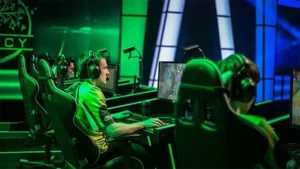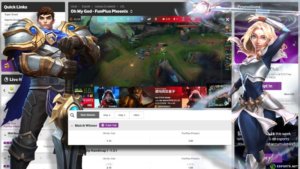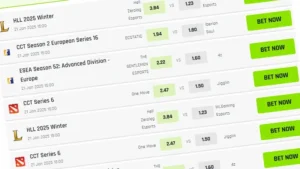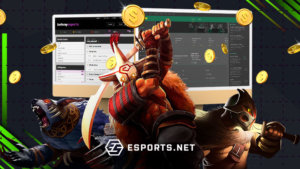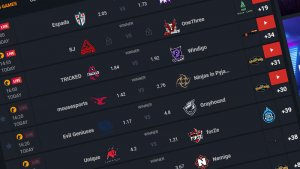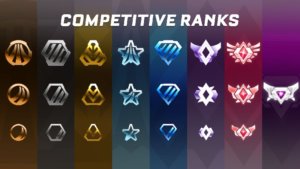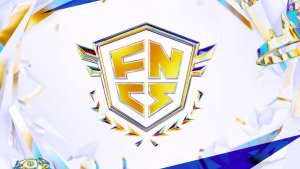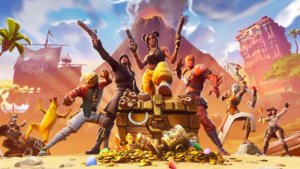Becoming a Twitch streamer can be overwhelming, especially if you have yet to gain experience with Twitch or Twitch slang. The entry threshold for new users is pretty high, especially regarding language. Twitch is one of many streaming platforms; however, it is the most popular. Why? Twitch’s success and popularity can be attributed to many factors, but the one that stands out is the Twitch chat.
While the chat feature is available on every other platform, like YouTube or Facebook Gaming, none developed such a distinctive community, culture, lingo, or slang, as Twitch. Knowing the slang that people on the chat use to describe their feelings is essential to understanding them. But fear not! To help you, we’ve compiled some of the most common twitch lingo and terminology to help you in your quest to become a famous streamer.
For the sake of newcomers out there, we are going to split the twitch terminologies into three categories, namely:
- Chat Slang
- Technical Terms
- Emotes
Twitch Slang in Chat
7TV: 7TV is an emote service and extension for Twitch and YouTube. It is very similar to BTTV.
Andy: This is used to describe all controversial or stereotypical streamers on Twitch or other streaming platforms. While there is no clear-cut definition for Andy, all you need to know is you never want to be called an Andy. Well, except it’s your name.
Botting: It is the practice of creating or acquiring bots in order to increase the number of viewers. It’s against Twitch’s terms of service and could get you punished with bans.
Brigading: This happens when Twitch communities raid each other, entering various channels like Discord to troll each other. In most cases, brigading is just for fun and not classified as bullying.
BTTV: Also known as Better Twitch TV, is a browser extension that allows users to use emotes and animated spots in Twitch chat.
Collab: Collab is a short form derived from Collaboration.
Clip Chimp: This is a Twitch user who creates and shares out-of-context clips from a streamer’s channel. The clips are often shared on Reddit or other social media platforms.
F is a form of paying respect: The term originated in 2014 when Call of Duty asked players to press F on their keyboard to “pay respects” to virtually fallen soldiers.
FrankerFaceZ: Commonly known as FFZ, FrankerFaceZ is a Twitch extension that allows broadcasters to add custom emotes, layouts, chat customization, and more to their channel.
FPS or First-Person Shooter: FPS is a game genre where the player’s view is centred on a gun in the first-person perspective.
Hate Raid: This is an attack by anonymous users flooding someone’s chat with insults and harassment.
Hype Train: A hype train is a big celebration where the community unites to support their favourite streamer. Sometimes they get rewards for keeping the hype for a long time.
IRL: is the short form of “in real life.”
Mod: Mod simply means moderator in Twitch lingo.
Raids: This happens when a streamer opts to instantly switch their current live audience to the feed of another streamer. In doing this, they promote and saturate the other channel with fresh viewers. You could always learn how to raid on Twitch if this is something you would love to do.
Rerun: Rerun is a recorded stream that is broadcasted again.
Stream Sniping: This refers to using someone else’s stream against them. For example, if you are playing Call of Duty live, your opponents could put up your stream to find out where you are hiding. This frequently occurs in the streaming community, and even some of the most prominent Call of Duty, LoL, Apex, and Valorant streamers have complained about it.
Trolls: these are pitiful cyberbullies who enter random channels to disturb/harass the streamer and their audience.
Twitch Extensions: These are tools created by 3rd parties that add new features to enhance the viewing experience on Twitch.

© Twitch
Technical Terms on Twitch
Admins: These are the Twitch employees who ensure Twitch users follow the service’s Terms of Use. They are also responsible for handling disciplinary cases.
Affiliates: These are streamers who reached Twitch Affiliate after the first term of the Twitch Partnership Program. They are allowed to monetize their content and grow to become full-fledged twitch partners. This is one of the major ways streamers make money.
Alerts: These are unique notifications that appear on streamers’ feeds. They often alert streamers and viewers about new subscriptions, donations, and other viewer engagements. They are often run by a third-party provider.
Bans: This is the ultimate disciplinary action for breaking the Twitch law. Bans can be temporary or permanent. While banned, the user’s profile is inactive, and the message “Sorry. Unless you’ve got a time machine, that content is unavailable” appears instead. They are also certain words banned by Twitch and bans imposed by other users. You won’t be able to see someone’s profile or view their chat messages once they have banned you.
Bandwidth: This is the amount of data that can be transferred from one point to another within a network in a specific timeframe.
Bits: They are Twitch’s internal currency. Viewers can buy Twitch Bits and send them as gifts for their favorite streamers. The act of giving bits to streamers is called Cheers.
Bitrate: If a stream is lagging way more than it should, and viewers are complaining about the bitrate, they’re referring to the stream’s quality. Occasionally, a streamer’s internet connection prevents them from streaming at high resolutions. Thus they must lower their bitrate in order to reduce the overall quality.
Bots: There are good bots, and they are bad and illegal ones. The good ones often provide a service like helping viewers by providing useful information in a chat. In contrast, the illegal ones are used for self-profit or to harm individuals.
Twitch Categories: These are used by Twitch to divide and group streams by content
Twitch Clips: These are short snippets of an older live stream. Read our in-dept Twitch Clips Guide.
Commands: Commands can be typed in the chat by users and streamers. They are also listed in the profile section of the streamer’s channel, and typing the command starts a particular action. For example, typing the !lurk command sends a lurk message to the streamer.
Discord: it is an external communicator used by streamers and their community.
Emotes: Emotes are Twitch-specific illustrations or animations that are sent in chat.
HUD: commonly referred to as Heads Up Display. It usually refers to graphics that pop up to show notification alerts like subscribers, followers, hosts, raids, etc.
Moderator(Mods): A role for users on Twitch. Moderators are chosen by a broadcaster and are responsible for enforcing rules within a channel’s chat. A Moderator has the power to remove all messages from a specific user, prevent a user from sending messages to the chat for a specified amount of time, and ban a user in an effort to maintain order.
Overlays are graphics or animations that appear natively on the stream.
Twitch Prime: This is a monthly subscription service that is an offshoot of Amazon Prime. It allows users to access premium content, free games, subscriptions to their favourite channels, in-game content, and other Amazon Prime benefits. Learn how to link Amazon Prime to Twitch.
Shadow Ban: Occurs when someone is banned in almost every sense of the word, but they aren’t outright prevented from using the platform altogether. They can still stream there, but their account does not come up in searches.
Subathon: It is basically a type of stream where viewer donations determine the length of the stream.
Verified: It is a channel with a purple check icon next to the streamer’s name. Learn how to get verified on Twitch.

© Twitch
Twitch Emotes
Cmonbruh: It is used to express confusion or to react to racist comments in the chat. Read more about Cmonbrush Twitch Emote.
COPIUM: COPIUM in Twitch slang refers to the use of this fictional drug to cope with loss or failure. Learn more about COPIUM meaning.
GachiGASM: It is used to show great delight with what has just happened. It can also be used to say that a man is attractive.
Jebaited means someone is trolling or was just tricked. Find out what Jebaited means.
Kappa: It is one of the most popular emotes on Twitch. When someone uses Kappa, you should know they are being sarcastic, ironic, trolling, or playing around in some other way. More about Kappa meaning, history and origins.
KEKW: KEKW is a FrankerFaceZ emote designed to represent laughter whenever something funny happens during streams. In-depth guide about KEKW Emote meaning.
Kreygasm: It is used to show jor and satisfaction
MonkaS: This emote is used to show anxiety and distress. Find out more about MonkaS meaning on Twitch.
Pepe the frog: This is probably the most known cartoon frog in the universe. As a result, several Pepe-based Twitch slang emotes have become quite popular over the last few years.
PepeHands: It is used on Twitch when a user is trying to signify sadness (or pretending to be sad) or when the streamer seems upset about something.
Pog/Poggers is the world’s most widely recognized Twitch emote. It is based on Pepe, and it’s meant to express joy, happiness, or even hype. Read more about PogChamp meaning.

What on Earth is ‘Twitch Copium’?
Conclusion
Twitch slang can sometimes be very challenging and confusing. Like every niche, streaming also has its own internal rules. Hopefully, with the help of this guide and our streaming tips, you won’t have any problems when it comes to using the right phrases or emotes in the chat and growing on Twitch.
FAQs on Twitch Slang
Can I stream without knowing any Twitch slang or terminologies?
Yes, but it would put you at a big disadvantage.
Are Twitch Emotes Free?
Yes, almost all emotes are free, but some can only be accessed through third-party software.

